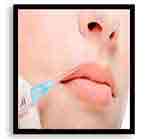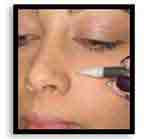Tattoo Removal
pre and post care
Pre-treatment information
Preparing for your treatment is a very important step in getting the best results from your Tattoo Removal.
- Prior to your initial consult shave hair from the treatment area (as most treatments are done on that day).
- Avoid the sun and tanning beds for 30 days, or cover repeatedly with SPF 45+
- Please inform your technician if you are pregnant or have diabetes.
- Also, be sure to inform us if your tattoo has any metallic or plastic inks (NEW TATTOO RISK).
- Before the treatment, you may apply a topical anesthetic to the treatment area, but it needs to be wiped off immediately before the laser is administered.
During treatment Tattoo Removal Important Information
- Must wear goggles (proper eye protection). If you are not wearing proper eye protection, as some laser settings will blindly lighten up the room when fired.
- The whitening effect of the 532nm laser is not as great or noticeable as the 1064nm, but you should still be able to see a lightening after your treatment.
- When doing tattoo removal on an arm sleeve, break the arm into two sections, top half and under half (it may compromise healing blood flow), just come back a week between sessions.
Post-treatment Tattoo Removal Important Information
- After your treatment, usual activities can resume, just keep the area clean!
- May ice the tattoo area, be mindful not to scratch, rub or irritate the treated area in any way.
- Avoid extreme sun exposure after the treatment, and until the area is fully healed.
- Swimming pool, Chlorine, and sun can very, very slowly help it fade otherwise.
When working on a tattoo for the first time, it may be worth giving it a pass with the 1064 nm wavelength, even if it is in one of the other (lighter) color spectrums. Many tattoo shops do not necessarily have a broad range of colors. They will often have the basics and then use black or white ink to darken or lighten the base color. Hence, a dark red may still respond to 1064. After a few shots, you will either have an immediate reaction (the typical whitening/ashy/chalky look) or no reaction at all. Discontinue if there is no reaction.
The 532 wavelength is for reds, yellows, and oranges. If you are unsure as to whether you are on the proper wavelength, the 532nm laser setting will light up the room when fired. If you are not wearing proper eye protection, the after the image of the laser may inhibit your ability to accurately fire the laser again where you want it to go. The whitening effect of the 532nm laser is not as great or noticeable as the 1064nm, but you should still be able to see a lightening after your treatment.
NOTE:
As mentioned above when doing tattoo removal on an arm sleeve, break the arm into two sections, top, and bottom. It compromises blood flow. We will have them come back a week between sessions.
Places that go too fast or strong to shoot for quick results can crystalize the ink and chances are never that it can be removed, have the patience for best success. Thus we do not have a super high Joule setting on the 1st session (others are doing a disservice) because now they are limited in success whereas we are able to increase the Joules. Barely get an ashy/chalky reaction. Also, starting too high will crystalize the ink, but trap it in scar tissue.
Body Beautiful Medical Laser Spa offers FDA-approved non-invasive safe and effective treatments for unwanted professional, amateur, cosmetic (permanent makeup), medicinal, and traumatic tattoos. As well as other cosmetic services such as the removal of unwanted brown pigmentation, solar lentigines, birthmarks, and dark spots. Your technician can give you a better idea of how many sessions you’ll need at the time of your consultation for any of these treatments.
Please note: For professional tattoos, it takes 8-12 treatments minimally for a good reduction, removal or lightening. As for amateur tattoos, it normally takes less time, usually around 4-8 treatments. Patients sometimes notice that not much has happened to the tattoo after the initial session. This is normal as the body takes 4-6 weeks to break down the ink. Several sessions are necessary and will depend on the age of the tattoo, location on body, amount or type of ink and colors used in the tattoo. Some people see better results per treatment by waiting longer between treatments. Keep in mind some tattoos can be removed but not all can be completely erased. Different colors present in the tattoos may respond differently to laser tattoo removal treatment and it is important that you return every 4-8 weeks for all of your scheduled sessions.
Our offices use different laser technology varieties for maximum results for tattoo removal. Q-Switch and Picosure which are classified by their high-intensity short pulsed beam light energy that breaks down the pigment. The Q-Switch wavelength pulse lasts a mere billionth of a second while the Picosecond lasts one trillionth of a second in length. These lasers break up tiny fragments of pigmentation or target tattoo ink beneath the skin. This breaks the ink in minuscule dust-like particles with minimal or no damage to the surrounding skin. These tiny particles (now considered foreign to your body) and the skin cells called ‘macrophages’ are left behind and are able to be removed by the body. Note that the rate at how quickly it absorbs and clears away depends on the individual patient.
Depending on your tolerance laser tattoo removal may be painful and patients described it as a rubber band snapping against the skin. We do offer topical or injectable lidocaine for help with any discomfort. Additionally, you can get lidocaine patches at your local drug store or we can use ice for numbing before treatment. You should avoid alcohol, caffeine, or any type of pain reduction drugs the day before the treatment but pain relief medication can be used the day of treatment. Furthermore, do not use any creams on the skin 24 hours before the treatment session as this can cause unwanted effects. Note that topicals and lidocaine are an additional charge based on the size of the tattoo. Shave hair prior to treatment in the area.
Must wear goggles. Here’s what you should typically expect during and after getting this procedure. Immediate white frosting on the upper surface layer of skin usually occurs (note: this is just trapped carbon dioxide, which lasts for several minutes). After treatment, you may notice reddening and swelling which is the body’s way of keeping the treated area cool to allow for fast healing. The tattoo removal laser creates a controlled superficial burn and can cause the development of blisters, pinpoint bleeding, crust, or scabs within 12-72 hours. This may last 1-2 weeks or more (this is normal) DO NOT pick any scabs or blisters. The treated areas may be pink or pale after the scab separates. Healing is usually complete by 4-6 weeks after treatment thus the continued lightening of the tattoo can be pursued for 4-8 weeks after each session.
Because patients could expect to see swelling and/or blistering for the first few days after the treatment as well as scabbing you may want to take Tylenol for pain and elevate the treated area. Unwanted pigmentary changes may occur following laser treatment, so it’s possible your skin may either lighten or darken (these changes may be transient or permanent typical).
Describe PFD Patches
This FDA-cleared Merz Aesthetic technology is silicone infused with perfluorodecalin and provides helpful assistance for your tattoo removal treatment. This add-on aids our laser-guided tattoo removal technology to reach ink particles deeper within the skin which may be a great fit for your existing treatment. It may cut the amount of treatment by 1/3. These PFD patches allow for multiple passes with lasers that can result in better treatment outcomes.
Recommendations – Patients that are consistent with these instructions usually see excellent results.
- Apply cool compresses, as necessary, for 24 hours after the laser treatment to help reduce discomfort and inflammation. You may take plain Tylenol, but avoid aspirin (as it can increase bruising) and elevate the treated area to reduce swelling.
- Before, between and after it’s important for all laser patients to keep the treated area from prolonged direct sun exposure, tanning beds, or self-tanner prior to any laser treatment for 2-3 weeks. Wear a sunblock with an SPF 30+ or cover the area.
- Try not to cover the area you do not want moisture building up as it starts to heal. You can cover the area if at risk for bumping, rubbing or too much sunlight. Drink plenty of water following treatment to help flush out pigment particles. We also have a great daily vitamin and detoxing vitamins.
- Clean the area gently with soap and water and then gently pat the area dry. Keep the area dry from fluids and only slightly moist with approved topical such as a thin coating of antibiotic ointment or Aquaphor up to 3 times a day while the area is healing. As you are bathing, you can apply Vaseline onto the area to seal it.
- DO NOT PICK or scrape even if a scab does form as this may result in infection and scarring. Shaving should be avoided in the treated area until it is completely healed.
Do not wear makeup or any cream or medication unless recommended by our office for 48 hours. - After a laser treatment avoid submerging in water including swimming pools, hot tubs, lakes, etc. Make sure the area is completely healed before resuming any activity that could allow bacteria into the healing area like sports and gyms.
- For poor circulation areas and large-sized tattoos, a dormant/latent allergy reaction can occur (especially with RED ink). *We would need to know if you had a severe or bad reaction during or after getting a tattoo as we may need to consider special portion sectioning for the patient.
- If there is any drainage, liquid oozing from the treated area, or open wound apply a Triple-Antibiotic ointment, Gentamicin, or Bacitracin and cover with a clean, sterile non-adherent bandage to prevent infection. This can also be used if the area becomes itchy or tight. As long as skin isn’t broken open you can use hydrocortisone cream.
- If you notice honey-colored crusting, oozing, spreading redness or it feels swollen and warmer heat around the area after two or three days you may have gotten it infected. If you experience unusual discomfort, bleeding, other complications, or if you have any questions or concerns we need you to contact the office immediately at 724 987 3221 as you may need to take antibiotics – to help clear up an infection. With mindful care, this will heal beautifully.
*Of course, if you have any extreme reaction (such as moderate facial swelling or rash) stop into a Minute Clinic or Med-Express. Any difficulty breathing or other distress calls 911 or an emergency department and have them evaluate it promptly.
Contraindication – Caution read before considering treatment and consult with your doctor if you have any concerns. As per your practitioner’s discretion refrain from getting treatment with any conditions which might make it unsafe. You CANNOT get tattoo removal if you are pregnant or planning to get pregnant. Avoid tattoo removal for a few months prior to breastfeeding. Also, inform us if your tattoo has any metallic or plastic inks. Treatment should be monitor by your doctor if diseases that are light-sensitive when using certain wavelengths are present in patients. These diseases may include but are not limited to a history of systemic lupus erythematosus, porphyria, and epilepsy. Some light-sensitive issues such as recurrent herpes simplex (in the treatment area) may be treated only following a prophylactic regimen and if discussed with your physician. Avoid excessively tanning skin, tanning beds or tanning creams within the last 3-4 weeks (minimally), depending on how the patient retains. Consult with a doctor if you have a history of any kind of cancer or impaired immune system such as HIV, AIDS, poorly controlled endocrine disorders such as diabetes or the use of immunosuppressive medications. Consult with a doctor if you have an active condition in the treatment area such as sores, psoriasis, eczema, rash, or a history of skin disorders such as keloids, abnormal wound healing, as well as very dry or fragile skin. Avoid photosensitive herbs, food supplements, vitamins, and medications such as Retin-A for a week, Accutane for 4 months.
Important 2020 Tattoo Facts
- U.S. Annual spending on Tattoos 1.72 Billion
- Americans who have at least one tattoo 15% (46 Million)
- U.S. adults 18-28 who have one tattoo 38%
- People with tattoos who claim they are addicted to ink 32%
- People who have regret after getting a tattoo 19%
- U.S. population who attempted covering up a tattoo 8%
- People with a tattoo who are getting or have had one removed 13%
- Almost half don’t want their children to have tattoos or piercings 49%
Consider these Important Factors When Getting a Tattoo – (learn from this advice)
- People think the reputation of a tattoo artist is the most important factor 47%
- People think the most important factor is price 7%
- People think a tattoo with personal meaning is the most important factor 46%
Insight about people with a tattoo
- People with tattoos say it makes them feel rebellious 29%
- People who say it makes them feel sexier 31%
- People that say their tattoo makes them feel more intelligent 5%
Educational
- People with tattoos who are high school graduates 20%
- Those with associates degrees 19%
- Falls steeply for those with a bachelor’s degree 10%
- Advanced degrees (Masters) are even less likely 8%
- Ph.D. recipients who have ink 3%
HR managers cite tattoos as the 3rd attribute that limits career potential
- Feel tattoos/piercings hurt chances at a job interview 76%
- Believe employees with tattoos may reflect poorly on their employers 39%
- Feel visible tattoos are inappropriate at work 42%
- Fortunately, only a few have reported faced actual discrimination 4%












